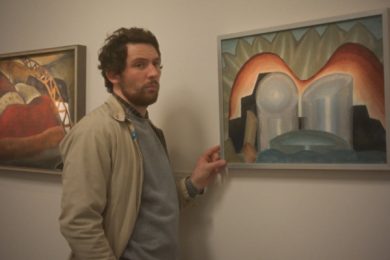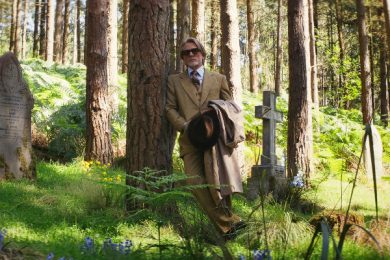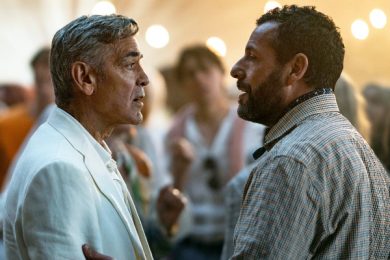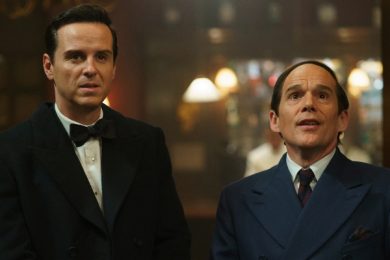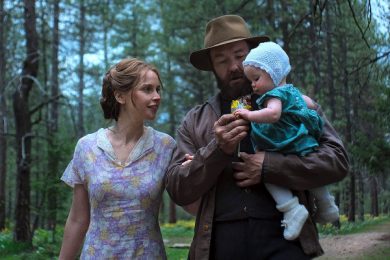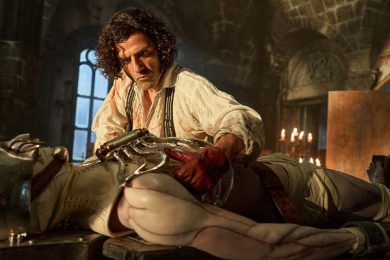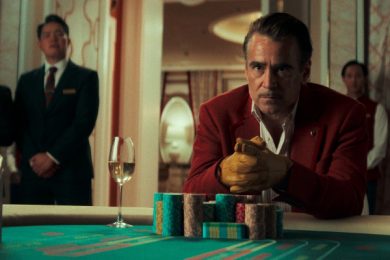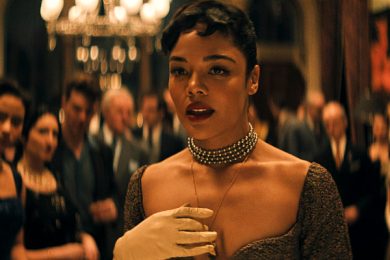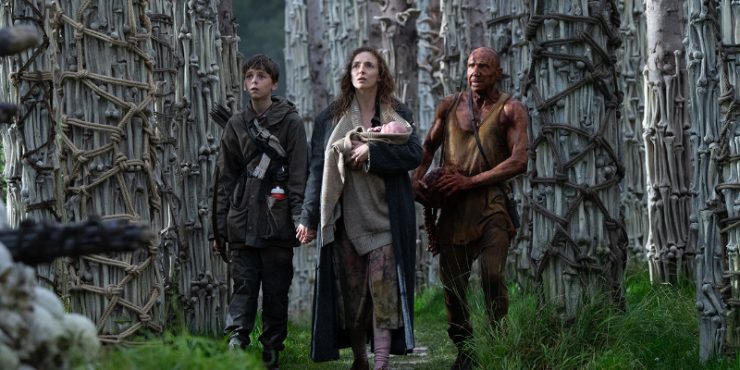2002’s 28 Days Later is a magically inventive and captivating horror movie that takes elements from zombie film tropes and morphs it into something profound. In its immediate sequel, 2007’s 28 Weeks Later, the thesis was clear: individuals are capable of protecting other individuals but humanity as a whole has no infrastructure to safeguard against its own destruction. Writer Alex Garland has a winking cynicism of institutional authority and military might. In all of the movies in this series, there are moments where humans are more dangerous than the infected zombies. The latest film, 28 Years Later, is a reunion between writer Garland and director Danny Boyle. It’s their first collaboration since 2007’s Sunshine. The two have had incredible creative chemistry and 28 Years Later is a perfect example of this.
Garland has spent the last decade-plus trying his hand at directing. Much like Boyle, his success has been varied. His scripts have always been headier than the genre material he functions within, and his endings always verge on the ridiculous, sometimes toppling over the edge. Boyle is a workmanlike filmmaker with an auteurist bent. He’s made masterpieces and he’s made disasters. His 90’s-British-techno energy is an acquired taste but it absolutely clears when executed correctly, which makes him pretty perfect to handle Garland’s impractical but lofty ideas. Does 28 Years Later reach the heights of 28 Days Later or Sunshine? Not even close. But its propulsive drive and touching characterization reminds you that they are two very talented artists, still capable of making some very compelling drama.
Keeping the tradition of the first sequel, there are no returning characters here. Years takes place on a Scottish island which has successfully bordered itself against those infected by the rage virus which is still rampant in the UK and its local territories. All land incorporated within have been completely quarantined, meaning anyone left over has been forced to fend for themselves. The island is able to stay safe thanks largely to a tidal causeway too powerful to cross. It’s only possible in the short moments low-tide, where the inhabitants occasionally cross, with bow & arrow in tow, to forage for any supplies or food that they can find. The children on the island are quickly taught the art of the bow, in preparation for their necessary trips to the mainland. Knowing how to hunt the infected is crucial in the survival of their community.
Jamie (Aaron Taylor-Johnson), a prized member of said community, decides to take his twelve-year-old son Spike (Alfie Williams) to the mainland for the first time. Jamie is a veteran at this point, with little-to-no fear of his abilities to defend against the infected. But this is Spike’s first time, an opportunity to finally learn what the outside world is like. Spike’s mother, Isla (a remarkable Jodie Comer), is severely ill but no one knows with what. She complains of pain and discomfort, and seems delirious whenever she isn’t outright sleeping. When she learns Jamie’s plan, she protests in agonized screams. Father and son journey out anyway. They confront slow, ground-crawling infecteds, but they also see the more typical fast-moving victims who prey upon them with an untamed fury. There’s now also “alphas” who lead the faster groups, who are massive in size, strength, and require great effort to finally take down.
These extensions in lore for the infected (there is much more where that came from) are the movie’s most tedious element. Garland’s scripts see them as more than monsters and has always used them as a way to reveal the actual monsters in our everyday life. It’s a reminder that this series is not, technically, a zombie franchise in the traditional sense, but 28 Years Later really stretches the premise to its limits, including one vital scene that really requires the audience to swallow a lot of suspension of disbelief. Even 28 Days Later, one of the most remarkable films of its decade, has this same problem, but in its most recent iteration, it appears to have metastasized, requiring you to forgive contrivance and endure some incredibly strange sequences.
The film’s second half involves Spike’s decision to take his mother by himself to the main land in the hope of curing her mysterious illness. There’s rumors of Dr. Ian Kelson (Ralph Fiennes), a reclusive man who lives among the infected. The miracle of his survival is surpassed by stories of his insanity, anecdotes of him piling corpses to the heavens, collecting bones for god knows what. Jamie forbids Spike from taking Isla to him, but the spirited son does what’s best for his mother. Fiennes’s Kelson doesn’t show up until the film’s final act, a deliberate and intelligent choice that allows the legendary actor to funnel all his brilliance into the film’s final thirty minutes, where he puts on a clinic in supporting performance. We kind of know from the beginning that Kelson is misunderstood, but Fiennes makes him much more than a friendly eccentric. He’s the movie’s savior.
As a rather substantive fan of Boyle, I’m glad to see him return from the disaster that was 2019’s Yesterday and return here with a film that is not only good, but is good because of what he’s able to bring to it. In the early scenes of Jamie and Spike running for their lives from the infected, we can see the remnants of the director of Trainspotting, a filmmaking style so effortlessly thrilling that there’s nothing to feel but exuberance. It’s also a reunion between Boyle and cinematographer Anthony Dod Mantle, the Oscar-winning legend who revolutionized the use of digital photography in the 90s. Dod Mantle’s films for Boyle and the Dogme 95 movement were sparked with a visceral immediacy that has been completely abandoned in contemporary cinema. Seeing it utilized here was an emotional, overwhelming experience that I cherished greatly.
I’m hesitant to mention the film’s framing device. The film’s opening is an effective little short film of a home of mostly children getting torn apart by the original infection. This leads the way to the movie’s ending which is so completely out of the realm of expectation, I simply don’t know how to explain it. Just know that when I say “nothing can prepare you for the way this movie ends”, I’ve never meant it more in my entire life. It’s all a set-up for the immediate sequel 28 Years Later: The Bone Temple, which is already finished and slated for release in January. If this movie’s final scene is any indication, then I expect Bone Temple to be yet another departure from the assumed narrative trajectory of the larger franchise, but if it manages to recreate 28 Years Later‘s exquisite filmmaking, then sign me up.
Directed by Danny Boyle

